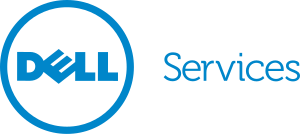Dell announced today it has finalized the acquisition of Make Technologies, a leading application modernization software and services company. This acquisition, combined with the recent acquisition of Clerity Solutions, enables Dell to empower customers to reduce the cost, risk and time required to transition business-critical applications from legacy systems to cloud infrastructure and open, standards-based platforms. Through this technology, Dell is positioned to help organizations leverage more flexible platforms, allowing them to better leverage social and mobile technologies, enhancing workforce productivity and helping to deliver better business results.
The acquisition significantly augments the applications expertise Dell offers to customers with the following services enabled by the Make Technologies Transformational Legacy Modernization (TLM) suite:
- Detailed application portfolio assessments to help customers define a
modernization roadmap - Faster, lower risk, and cost-effective approach to application and
data re-engineering
With this acquisition, Dell is better able to provide customers IT modernization solutions to reduce operational costs, migrate to an easier-to-maintain, standards-based architecture, and move to an application and data architecture that more effectively aligns with their business strategy. With a comprehensive mix of software and services dedicated to application modernization, Dell is well positioned to help scale Make’s offering and adds another tool in its suite of solutions that can help relieve customers from the inefficiencies of legacy applications and legacy infrastructure.
By better aligning their environments with current and future business processes, Make can empower customers’ modernization efforts by providing fully re-architected applications that provide a foundation for growth. The company differentiates itself in several ways:
- Provides customers with end-to-end application portfolio
transformation solutions that modernize entire portfolios of legacy
applications in less time and with higher precision - Provides code and data migration tools to re-architect legacy
application software to a more modern architecture - Reduces cost of maintaining and managing legacy applications
- Drastically reduces the amount of custom code in legacy portfolios,
while protecting the legacy information and business processes of the
business functions it supports - Increases business agility through a re-engineered application that
better aligns with our customers’ current and future business processes
“The addition of Make Technologies to our Dell Services portfolio allows us to offer customers a complete suite of application modernization services to help them move their legacy IT environments to more modern architectures,” said Steve Schuckenbrock, president, Dell Services. “At Dell, we are focused on solving some of our customers’ most complex problems with powerful IT solutions. With Make and Clerity we believe we have the industry’s most robust offering to help customers meet their modernization goals in an efficient, reliable and cost-effective way.”
“If Dell embraces the MAKE process as well as the tooling, it will gain a formidable weapon for its services arm. The sky truly is the limit for Dell – if it plays its cards right¹,” wrote Forrester Research, Inc. principal analyst, Phil Murphy.
“The combination of Make Technologies and Dell provides the market with a single vendor solution for any modernization activity and is an exciting step in expanding growth opportunities for our core application modernization software and services,” said Bill Bergen, president and CEO of Make Technologies, Inc. “Together, with Dell’s global reach, scale and reputation for customer support, Make’s methodology and tools will become even more accessible to more customers struggling with the dilemma that surrounds legacy environments.”





 The importance of data management is increasingly evident as companies find themselves having to respond to change faster than ever to remain competitive. Without best practices, volumes of data cannot be leveraged effectively to give companies a competitive advantage.
The importance of data management is increasingly evident as companies find themselves having to respond to change faster than ever to remain competitive. Without best practices, volumes of data cannot be leveraged effectively to give companies a competitive advantage. 